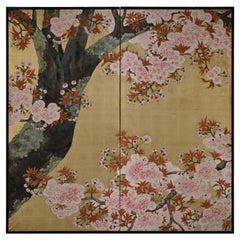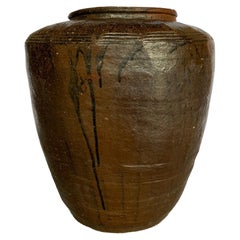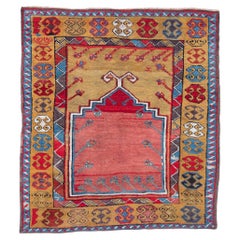Asia - Furniture
Early 20th Century Japanese Showa Asia - Furniture
Gold Leaf
Early 20th Century Uzbek Kilim Asia - Furniture
Silk, Natural Fiber, Organic Material
Early 20th Century Japanese Asia - Furniture
Bronze
Early 20th Century Chinese Qing Asia - Furniture
Ceramic
Early 20th Century Turkish Kilim Asia - Furniture
Wool, Natural Fiber, Organic Material
Early 20th Century Turkish Oushak Asia - Furniture
Wool, Natural Fiber
Early 20th Century Meiji Asia - Furniture
Pottery
Early 20th Century Turkish Oushak Asia - Furniture
Wool, Natural Fiber
Early 20th Century Persian Islamic Asia - Furniture
Brass
Early 20th Century Japanese Asia - Furniture
Wood
Early 20th Century Japanese Showa Asia - Furniture
Bamboo
Early 20th Century Caucasian Kilim Asia - Furniture
Wool, Natural Fiber
Early 20th Century Chinese Qing Asia - Furniture
Brass
Early 20th Century Japanese Asia - Furniture
Bronze
Early 20th Century Japanese Taisho Asia - Furniture
Wood
Early 20th Century Turkish Kilim Asia - Furniture
Wool, Natural Fiber, Organic Material
Early 20th Century Turkish Kilim Asia - Furniture
Wool, Natural Fiber
Early 20th Century Caucasian Kilim Asia - Furniture
Wool, Natural Fiber, Organic Material
Early 20th Century Caucasian Kilim Asia - Furniture
Wool, Natural Fiber, Organic Material
Early 20th Century Chinese Qing Asia - Furniture
Ceramic
Early 20th Century Caucasian Kilim Asia - Furniture
Wool, Natural Fiber, Organic Material
Early 20th Century Caucasian Kilim Asia - Furniture
Wool, Natural Fiber, Organic Material
Early 20th Century Caucasian Kilim Asia - Furniture
Wool, Natural Fiber, Organic Material
Early 20th Century Caucasian Kilim Asia - Furniture
Wool, Natural Fiber, Organic Material
Early 20th Century Turkish Kilim Asia - Furniture
Wool, Natural Fiber
Early 20th Century Caucasian Kilim Asia - Furniture
Wool, Natural Fiber, Organic Material
1920s Thai Other Vintage Asia - Furniture
Rattan
Early 20th Century Indian Other Asia - Furniture
Wood, Paint
Early 20th Century Turkish Oushak Asia - Furniture
Wool, Natural Fiber
Early 20th Century Japanese Asia - Furniture
Bronze
Early 20th Century Japanese Meiji Asia - Furniture
Pottery, Paper
Early 20th Century Japanese Asia - Furniture
Bronze
Early 20th Century Japanese Meiji Asia - Furniture
Cedar
Early 20th Century Turkish Kilim Asia - Furniture
Wool, Natural Fiber
Early 20th Century Turkish Oushak Asia - Furniture
Wool, Natural Fiber, Organic Material
Early 20th Century Japanese Asia - Furniture
Bronze
Early 20th Century Turkish Kilim Asia - Furniture
Wool, Natural Fiber
Early 20th Century Caucasian Oushak Asia - Furniture
Wool, Natural Fiber
Early 20th Century Indonesian Tribal Asia - Furniture
Leather, Wood
Early 20th Century Turkish Oushak Asia - Furniture
Wool, Natural Fiber
Early 20th Century Turkish Oushak Asia - Furniture
Wool, Natural Fiber, Organic Material
1920s Indonesian Organic Modern Vintage Asia - Furniture
Wood
Early 20th Century Japanese Meiji Asia - Furniture
Pottery, Paper
Early 1900s Indonesian Other Antique Asia - Furniture
Yarn
Early 20th Century Indonesian Organic Modern Asia - Furniture
Stone
Early 20th Century Turkish Kilim Asia - Furniture
Wool, Natural Fiber
Early 20th Century Japanese Meiji Asia - Furniture
Pottery
Early 20th Century Turkish Kilim Asia - Furniture
Wool, Natural Fiber
Early 20th Century Turkish Kilim Asia - Furniture
Wool, Natural Fiber
Early 20th Century Turkish Kilim Asia - Furniture
Wool, Natural Fiber, Organic Material
Early 20th Century Japanese Taisho Asia - Furniture
Cotton
Early 20th Century Caucasian Kilim Asia - Furniture
Wool, Natural Fiber
Early 20th Century Japanese Meiji Asia - Furniture
Cedar
Early 20th Century Turkish Kilim Asia - Furniture
Wool, Natural Fiber
Early 1900s Indonesian Other Antique Asia - Furniture
Wood, Teak
Early 20th Century Chinese Qing Asia - Furniture
Rattan
Early 20th Century Turkish Oushak Asia - Furniture
Wool, Natural Fiber
Early 20th Century Chinese Qing Asia - Furniture
Ceramic





